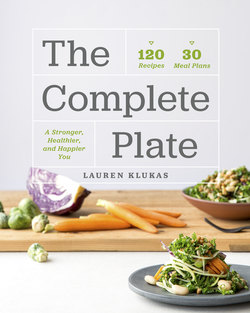Читать книгу The Complete Plate - Lauren Klukas - Страница 28
Оглавление28
Shopping
Everyone has their own grocery-shopping preferences. For myself, I like to shop on Sunday and get everything I need for the week. Others prefer to use produce when it is at its freshest, so they shop every other day. Whatever your inclination, there is an ingredient list provided at the beginning of each day to help you quickly build your grocery list.
Pantry and Freezer Staples (page 35) features a list of regularly used items that you should always have in your pantry or freezer. It makes weekly shopping more manageable!
Portion Control
Each recipe includes the number of serv-ings as well as the number of portions to be served for each calorie plan. Portions are intended for healthy males and females, aged 19–50 years old, based on current dri values. Some people may be surprised by actual portion sizes, and it may take some time to adjust to eating proper portion sizes. A gram weight is often included next to the volume measure. You don’t need to live life worrying about every single gram you eat, but weight does have an impact on the caloric range of certain types of foods. For example, 3 cups of spinach or ½ cup of shredded cheddar will vary depending on how tightly they’re packed into measuring cups. Invest in a digital scale to get the most accurate measurements (see Essential Equipment, page 36).
Please be aware that meal plan portions are not suitable for children, but kids can still eat the same meal. Just be sure to give them their usual portions.
Snacks
I’ve included a snack list for each meal plan. Consume all the snacks within your caloric plan to keep you satiated throughout the day and to ensure you meet your dri requirement. I recommend spreading them out over the course of the day.
Hydration
Males require 15½ cups of water per day and females require 11½ cups. This number includes drinking water, water from beverages, and water from food. While you receive some water from food, you definitely do not receive all of it. Your water intake should come from tap water, tea and coffee (with no additional cream or sugar), and sparkling water. If your sparkling water is sweetened, be sure it is sweetened naturally (e.g., with fresh lime juice) and not with an artificial sweetener. Water is vital with this plan as your fiber intake will most likely be much higher than you are used to. (See page 284 for fun flavored water ideas!)
